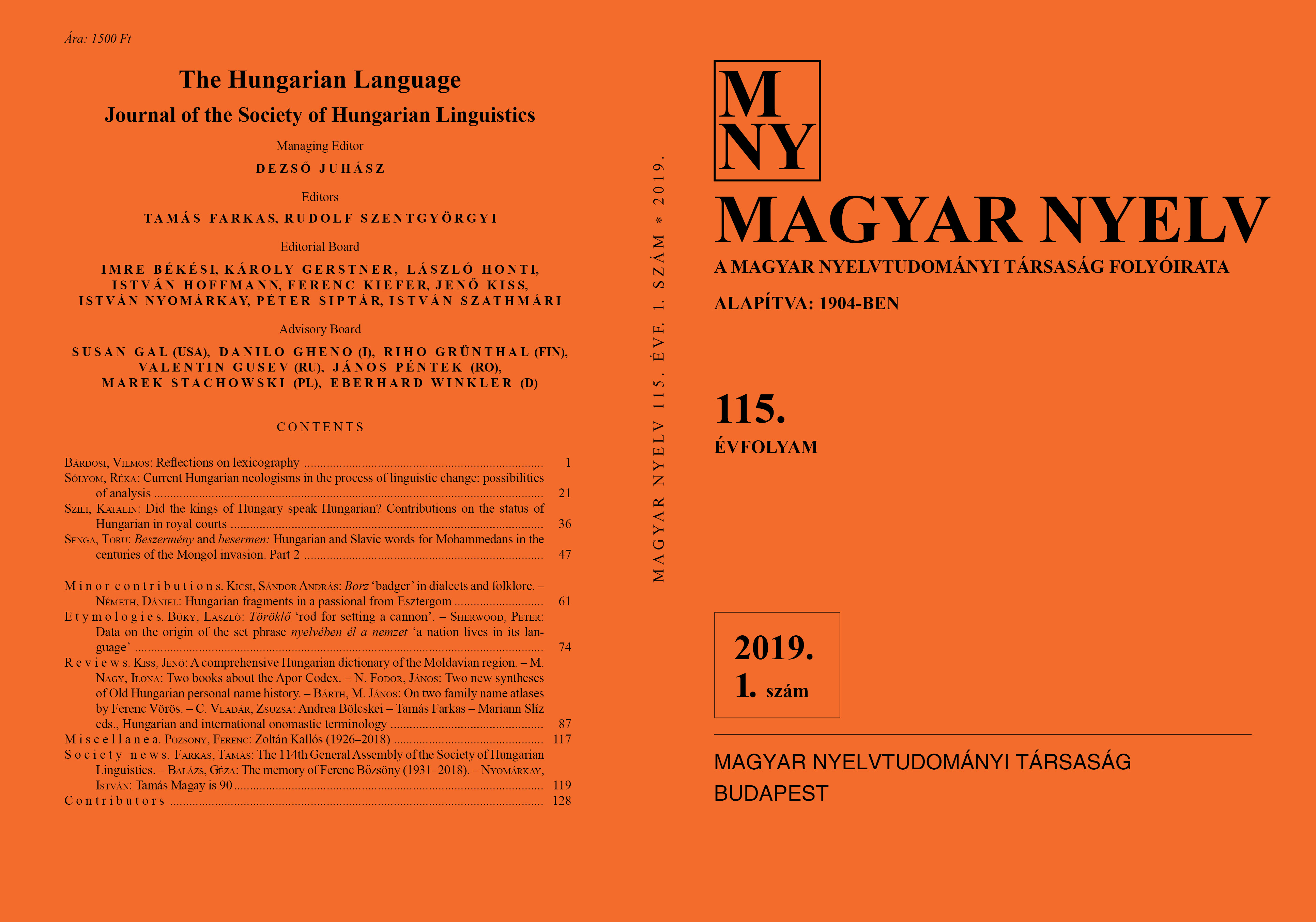Current Hungarian neologisms in the process of linguistic change: possibilities of analysis
DOI:
https://doi.org/10.18349/MagyarNyelv.2019.1.21Keywords:
neologism, linguistic change, semantic-stylistic analysis, metonymy, metaphor, conceptual integrationAbstract
The present paper analyses the semantic and stylistic makeup of current Hungarian neologisms in the process of linguistic change, in a functional-cognitive framework. The aim of the analyses is (i) to present case studies of the possibility of a semantic and stylistic analysis of neologisms of diverse grammatical structures based on examples collected by the author; (ii) to explore the possibilities of presenting linguistic change in general and neologisms in particular in the process of education, and (iii) to give examples of the mental processes that language users exhibit while using neologisms, taken from relevant data gleaned from questionnaires administered in a number of different years, and in organic unity with the analyses offered previously. The paper illustrates the analyses by graphical representations in terms of the theory of conceptual integration (blending). The content of mental spaces as represented in the figures is determined on the basis of participants’ answers in the questionnaire studies.
Downloads
Published
Issue
Section
License
Copyright (c) 2024 Réka Sólyom

This work is licensed under a Creative Commons Attribution-NonCommercial-NoDerivatives 4.0 International License.
Magyar Nyelv is a Diamond Open Access periodical. Documents can be freely downloaded and duplicated in an electronic format, and can be used unchanged and with due reference to the original source. Such use must not serve commercial purposes. In the case of any form of dissemination and use, Hungarian Copyright Act LXXVI/1999 and related laws are to be observed. The electronic version of the journal is subject to the regulations of CC BY-NC-ND (Creative Commons – Attribution-NonCommercial-NoDerivatives).
The journal permits its authors, at no cost and without any temporal limitation, to make pre-print copies of their manuscripts publicly available via email or in their own homepage or that of their institution, or in either closed or free-for-all repositories of their institutions/universities, or other non-profit websites, in the form accepted by the journal editor for publication and even containing amendments on the basis of reviewers’ comments. When the authors publicize their papers in this manner, they have to warn their readers that the manuscript at hand is not the final published version of the work. Once the paper has been published in a printed or online form, the authors are allowed (and advised) to use that (post-print) version for the above purposes. In that case, they have to indicate the exact location and other data of the journal publication. The authors retain the copyright of their papers; however, in the case of an occasional secondary publication, the bibliographical data of the first publication have to be included.



